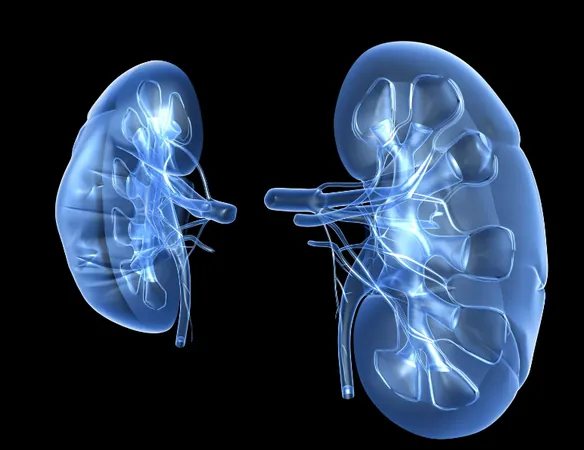
Breakthrough in Sound Propagation Study: Exploring the Macroscopic C540 Metamaterial!
2024-11-12
Author: Rajesh
Introduction
Researchers are making waves—literally—by unveiling a groundbreaking study that explores the intersection of topological metamaterials and sound wave propagation. This innovative approach, termed the "cut-and-glue" technique by Dr. Johan Christensen of IMDEA Materials, has been detailed in a recent paper published in *Nature Communications*.
The C540 Metamaterial
At the heart of this study lies Buckminsterfullerene, more popularly known as "buckyballs." Utilizing advanced 3D printing technology, scientists scaled up the molecular structure of C540 fullerene—remarkably tiny at around 1.1 nanometers in diameter, which is about 70,000 times smaller than a human hair—to a macroscopic model that researchers could observe more directly.
The C540 model, composed of an intricate network of interwoven hexagons and pentagons, provides a unique opportunity to investigate how sound waves behave and how energy can be confined within structures inspired by carbon allotropes. Scientists have long recognized that fullerenes, such as C60, consist of spherical carbon molecules featuring 12 pentagonal and 20 hexagonal faces. These fullerenes have been synthesized through methods like laser evaporation and have been detected in rare natural forms, such as shungite and carbon-rich celestial bodies.
Challenges in Study
Dr. Christensen notes the challenges inherent to studying the remarkable electronic properties of fullerenes at the nanoscale. He asserts, “By creating a larger, 3D-printed C540 model, we could bypass these limitations, providing profound insights into the interaction between sound waves and topological defects within the carbon lattice.”
Sound Wave Propagation
This innovative C540 structure—comprising hollow tubes arranged in a network of pentagons and hexagons—facilitates the exploration of sound wave propagation. The researchers specifically examined how pentagonal defects influence these sound waves. “Visualizing these resonant modes allows us to observe interactions with topological defects that are typically elusive in smaller synthesized molecules,” Dr. Christensen added.
Constructing the Model
To construct the C540 model, the team first fabricated a homogenous sheet of graphene, a two-dimensional material just one atom thick. Through their ingenious cut-and-glue method, they fashioned the sheet into wedges before reassembling it into a soccer ball-like form, incorporating regions of strain and curvature akin to those found in natural carbon materials. These topological defects are crucial as they affect how electronic waves travel, impacting wave confinement and behavior.
Implications of the Research
The implications of this research extend beyond mere observation; by manipulating the topological features of the structure, researchers demonstrated the potential to control wave propagation. This advancement promises to revolutionize applications in waveguiding, sound insulation, and various acoustic technologies.
Future Directions
Looking ahead, the foray into more complex fullerene symmetries is on the horizon, courtesy of collaboration with Professor Humberto Terrones from Rensselaer Polytechnic Institute, who previously visited IMDEA Materials. This partnership aims to delve into onion multilayer structures, shifting focus toward understanding flexural vibrations rather than solely sound waves. Such discoveries could unlock new symmetry rules, opening the door to innovative ultrasonic applications.
Collaborative Efforts
With a strong collaborative effort involving IMDEA Materials, IMDEA Nanoscience, the Materials Science Institute of Madrid (ICMM-CSIC), and Nanjing University, the research community is poised to forge new paths in the field of topological metamaterials and their astonishing properties. Stay tuned as this team's exploration may soon yield transformative technologies that reshape our understanding of sound and materials!





 Brasil (PT)
Brasil (PT)
 Canada (EN)
Canada (EN)
 Chile (ES)
Chile (ES)
 España (ES)
España (ES)
 France (FR)
France (FR)
 Hong Kong (EN)
Hong Kong (EN)
 Italia (IT)
Italia (IT)
 日本 (JA)
日本 (JA)
 Magyarország (HU)
Magyarország (HU)
 Norge (NO)
Norge (NO)
 Polska (PL)
Polska (PL)
 Schweiz (DE)
Schweiz (DE)
 Singapore (EN)
Singapore (EN)
 Sverige (SV)
Sverige (SV)
 Suomi (FI)
Suomi (FI)
 Türkiye (TR)
Türkiye (TR)